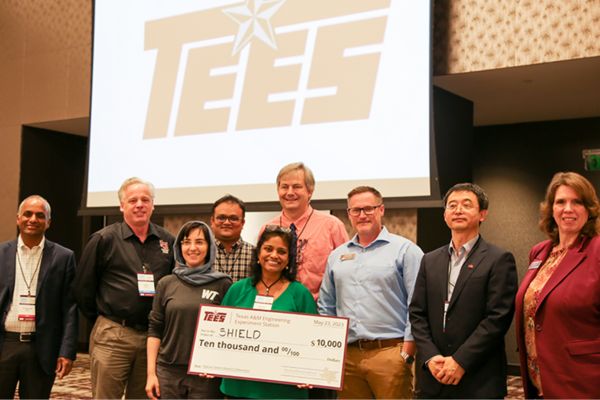Lamar University faculty, staff among top TARC Seed Grant Award winners
 Lamar University faculty and staff gathered at the Texas A&M Engineering Experiment Station (TEES) Annual Research Conference (TARC), earlier this year, joining researchers from across Texas to advance their research portfolios and took away top prizes from the conference.
Lamar University faculty and staff gathered at the Texas A&M Engineering Experiment Station (TEES) Annual Research Conference (TARC), earlier this year, joining researchers from across Texas to advance their research portfolios and took away top prizes from the conference.
TEES assists Texas researchers by promoting collaboration between schools within its large networking including community, colleges, four-year schools, and graduate degree-granting universities. The conference culminates in a competition where teams present potential projects to a panel of judges.
This year the top award of $10,000 went to Teamm SHIELD consisting Dr. Robert Kelley Bradley, assistant professor of industrial and systems engineering at Lamar University; Justin Carter, senior research engineer in manufacturing initiatives at TEES; R. Gavin Jones, senior director of contracts, grants and industrial partnerships at Lamar University; Dr. Kalyan Raj Kota, senior research engineer in strategic initiatives at TEES; Dr. Masoumeh Ozmaeian, assistant professor of engineering at West Texas A&M University; Dr. Manish Vasoya, postdoctoral researcher in aerospace engineering at TEES; and Dr. Qiang Xu, professor of chemical engineering at Lamar University.
"I came here hoping to connect for potential collaborations," Bradley said. "Little did I know that by day's end, I'd be part of an exceptional cross-university team, equipped with an exciting project and seed funding."
The SHIELD project will address the need for protection of electromechanical components in military, space, emergency response, oil and gas exploration and other applications. The $10,000 award will allow the team to develop a prototype for demonstrating applicability and effectiveness of a smart skin for relevant industries.
“It’s exciting to be part of this interdisciplinary team from four universities, working together to create a novel smart skin for robots in extreme environments and we are grateful to TEES TARC for providing this wonderful opportunity,” team lead Pulikkatahara said.
Over the next eighteen months the team will focus their efforts on materials, development and manufacturing methods for the smart skin, and they are looking to use what they learn to pursue larger multi-university grants.
At Lamar University, work is already underway for Bradley, Jones, and XU as additive manufacturing resources in the Bird House – LU’s Makerspace – have already begun producing armatures that will give strength to the smart skin.
For more information on TEES TARC, visit https://tarc.tamu.edu/about
Image provided by Texas A&M Engineering
